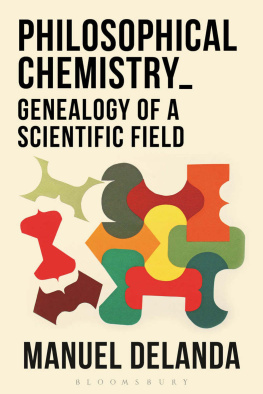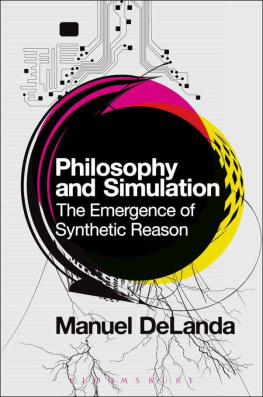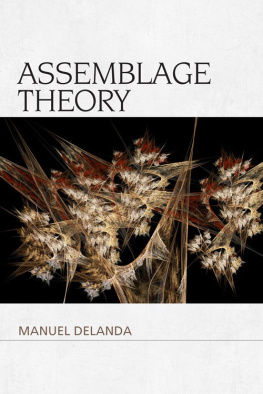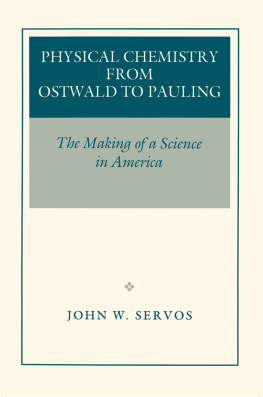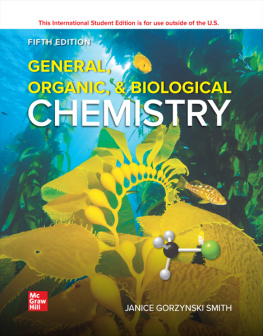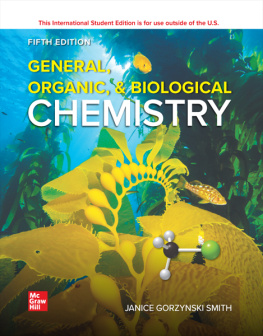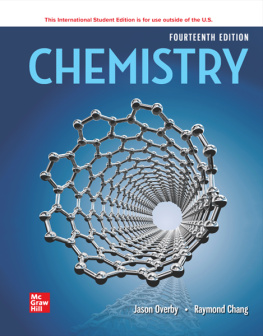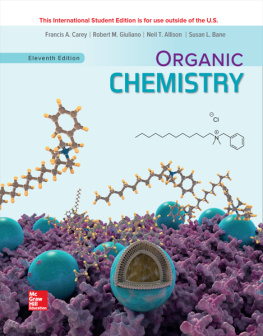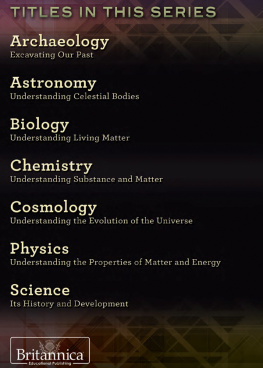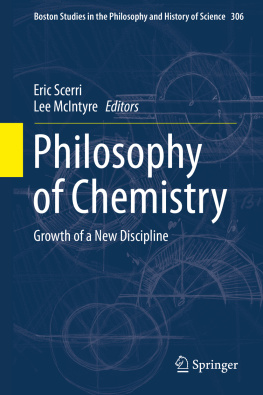PHILOSOPHICAL
CHEMISTRY
BY THE SAME AUTHOR
Intensive Science and Virtual Philosophy
A New Philosophy of Society
Philosophy and Simulation
ALSO AVAILABLE FROM BLOOMSBURY
Being and Event , Alain Badiou
Conditions , Alain Badiou
Infinite Thought , Alain Badiou
Logics of Worlds , Alain Badiou
Mathematics of the Transcendental , Alain Badiou
Theoretical Writings , Alain Badiou
Theory of the Subject , Alain Badiou
Cinema I , Gilles Deleuze
Cinema II , Gilles Deleuze
Dialogues II , Gilles Deleuze
Difference and Repetition , Gilles Deleuze
The Fold , Gilles Deleuze
Foucault , Gilles Deleuze
Francis Bacon , Gilles Deleuze
Kants Critical Philosophy , Gilles Deleuze
Logic of Sense , Gilles Deleuze
Nietzsche and Philosophy , Gilles Deleuze
Proust and Signs , Gilles Deleuze
Anti-Oedipus , Gilles Deleuze and Flix Guattari
A Thousand Plateaus , Gilles Deleuze and Flix Guattari
Barbarism , Michel Henry
From Communism to Capitalism , Michel Henry
Seeing the Invisible , Michel Henry
Future Christ , Franois Laruelle
Philosophies of Difference , Franois Laruelle
Essay on Transcendental Philosophy , Salomon Maimon
After Finitude , Quentin Meillassoux
Time for Revolution , Antonio Negri
Althussers Lesson , Jacques Rancire
Chronicles of Consensual Times, Jacques Rancire
The Politics of Aesthetics , Jacques Rancire
Of Habit , Flix Ravaisson
The Five Senses , Michel Serres
Statues , Michel Serres
Times of Crisis , Michel Serres
Art and Fear , Paul Virilio
Negative Horizon , Paul Virilio
PHILOSOPHICAL
CHEMISTRY
Genealogy of a Scientific Field
Manuel DeLanda
Bloomsbury Academic
An imprint of Bloomsbury Publishing Plc

CONTENTS
T here is no such thing as Science. The word Science refers to a reified generality that together with others, like Nature and Culture, has been a constant source of false problems: are controversies in Science decided by Nature or Culture? Avoiding badly posed problems requires that we replace Science with a population of individual scientific fields , each with its own concepts, statements, significant problems, taxonomic and explanatory schemas. There are, of course, interactions between fields, and exchanges of cognitive content between them, but that does not mean that they can be fused into a totality in which everything is inextricably related. There is not even a discernible convergence towards a grand synthesis to give us hope that even if the population of fields is highly heterogeneous today, it will one day converge into a unified field. On the contrary, the historical record shows a population progressively differentiating into many subfields, by specialization or hybridization, yielding an overall divergent movement.
This book is an attempt at creating a model of a scientific field capable of accommodating the variation and differentiation evident in the history of scientific practice. This model can only be applied to concrete fields, so every aspect of it will be illustrated with examples from the history of chemistry. This particular field has all the necessary characteristics to serve as an exemplary case: it has undergone splittings through specialization (inorganic versus organic chemistry) as well as giving birth to hybrids with other fields (physical chemistry). The model is made of three components: a domain of phenomena , a community of practitioners , and a set of instruments and techniques connecting the community to the domain. The domain of a scientific field consists of a set of objective phenomena. The term objective phenomenon refers to an effect that can emerge spontaneously or that, on the contrary, might require active interventions by an experimenter to refine it and stabilize it. The former case is illustrated by the celestial phenomena studied by astronomers, while the latter is exemplified by laboratory phenomena.
The domain of any actual field will typically contain phenomena that exist between the two extremes of the given and the fabricated, the
The domain of chemistry is composed of substances and chemical reactions. A good example is the reaction of an acid and an alkali, and their transformation into a neutral salt. The chemical reaction itself had been publicly recognized to exist for centuries before chemistry became a field. The powerful effervescence produced when acidic and alkaline substances come into contact, suggesting an internal struggle or even a battle, had been considered noteworthy since ancient times. But once chemistry came into being, additional phenomena began to accumulate around this one, enriching the content of the domain. One was the effect produced when acids or alkalis interacted with vegetable dyes, acids changing them to blue, while alkalis changed them to red. This effect began as a phenomenon but it was rapidly harnessed as a tool, a reliable indicator of the acidity or alkalinity of a substance. By the middle of the eighteenth century, the products of the chemical transformation, neutral salts, had proliferated and become the most important member of the domain: the chemist had learned to synthesize a neutral salt not only by the reaction of acids with alkalis, but also by reacting acids with metals and other bases. From those early beginnings, the chemical domain has evolved into a highly complex entity. By one calculation, the domain included over 16 million substances at the close of the millennium, with as many as a million new substances added to it every year. Thus, unlike the concept of Nature, which suggests a fixed object of study in which everything is given, a domain is a growing and changing target, never ceasing to pose problems to practitioners, and constantly eluding the goal of a final and definitive account.
The second component of a field is a community of practitioners whose personal practices are shaped by a variety of cognitive tools : the concepts they use to refer to phenomena and their properties; the set of statements they accept as true; the taxonomies they use to give order to the domain; the significant problems on which they are working at any one time; and the explanatory strategies they use to search for solutions to those problems.tool must be applied using abilities that are also acquired by training. In addition to this, the set of cognitive tools available to a community at any one point in time will be modeled as forming a heterogeneous collection of individual items not a monolithic theory. An apparent exception to this is cognitive content that has been given an axiomatic form, transformed into a set of statements (axioms), the truth of which is beyond doubt, from which many more statements (theorems) can be mechanically derived. But far from constituting an exception, concrete axiomatizations should be considered an additional cognitive tool added to the rest, rather than the final polished form that all cognitive content should take.
The third component of a field is the instruments and procedures that act as an interface between a community and a domain. Sometimes instruments are developed by practitioners as part of a well-defined line of research. In this case, they play the role of mere tools, increasing the accuracy of measurements or reducing the noise in the information that is extracted from a phenomenon. A good example is the electrical battery (the Volta pile), an experimental device used by physicists to produce phenomena related to electricity, but that became a powerful analytical instrument in the hands of chemists. The continuous electrical current created by the battery, when transmitted through a liquid solution in which certain chemical reactions were taking place, allowed chemists to disintegrate even the most stubborn compound substances, greatly increasing the power of chemical analysis and creating an entire subfield with its own phenomena crying out for explanation: electrochemistry.
Next page
